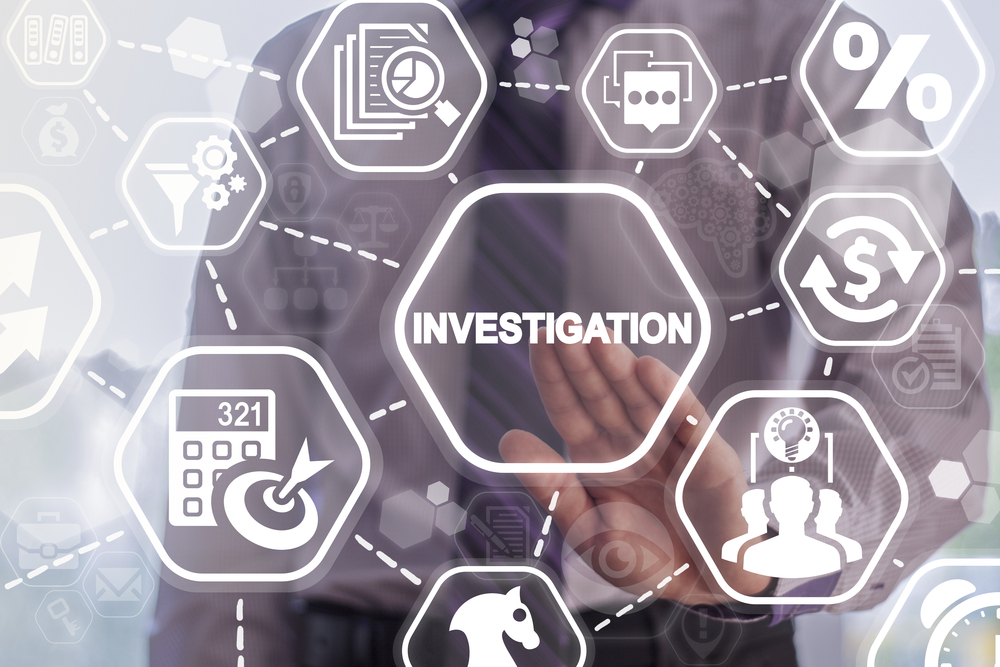
Author: Broccan Tyzack-Carlin, Safecall Ltd
Whistleblower investigations & Conducting a whistleblowing investigation: A simple 4-step whistleblowing investigation procedure for conducting an internal workplace investigation
Conducting a whistleblowing investigation thoroughly and expertly is a crucial aspect of corporate compliance, so it’s essential to have the correct process in place to investigate potential wrongdoings.
This is not always as easy as it sounds; here is a summary of the whistleblowing investigation procedures to follow:
Note: if you require immediate help with either a workplace investigation, whistleblower training or whistleblowing report systems, please call us on +44 (0) 191516 7720
Step 1: Identifying relevant reports
The first step in dealing with whistleblowing reports is to identify whether they constitute a relevant disclosure and comply within the company’s whistleblowing policy.
Reports that do not constitute an appropriate disclosure do not necessitate investigation under the whistleblowing policy. However, they may require investigation under other existing policies (i.e., grievance, harassment and bullying etc.).
It is essential to provide feedback to the whistleblower regardless.
This initial assessment and triage process helps to filter and categorise reports to identify and focus on those that require a whistleblowing investigation.
Step 2: Contact the whistleblower
Once a relevant report has been identified, it is crucial to establish communication with the whistleblower before commencing a whistleblowing investigation. It is recommended to respond to whistleblowing reports within a few days to maintain the credibility of the whistleblower system and prevent employees from losing confidence in it.
To react promptly, it is helpful to have a specially designed system or template in place for whistleblowing feedback.
Whether or not a report contains sufficient information it is best practice for the appointed Investigator to meet the whistleblower. This will provide the opportunity to engender trust, obtain further information or evidence, and to manage their expectations (feedback timescales, confidentiality etc.).
Digital whistleblowing systems, such as Safecall’s industry leading whistleblowing portal, allow for secure communication between the whistleblower and the organisation even if they wish to remain anonymous.
Step 3: Investigate the issue
On commencement of a whistleblowing investigation there should be an evaluation of documents, including material provided by the whistleblower, interviews with employees and further discussions with the whistleblower.
During all stages of a whistleblower investigation, it is crucial that you comply with relevant employment and data protection legislation.
Step 4: Time to take action
After the investigation is complete, the investigation report should be initially shared with the senior management team.
The report should include any matters that have been found substantiated together with measures that have been recommended or taken.
Any sanctions or other forms of reprimand should be communicated clearly within the organisation – being mindful of GDPR – to maintain the credibility of the whistleblowing investigation system.
Once the whistleblowing investigation is concluded, the incident should be marked as resolved in your Case Management system. Concluded cases should – within GDPR guidelines – remain within the whistleblowing system for reporting and archiving purposes.
Summary
Encouraging people to ‘speak up’ creates a culture that values and encourages employees to express their fears, ask questions, and raise concerns without fear of retaliation.
It also makes good business sense by providing an early warning system for addressing potential issues before they snowball into reputational, financial, and legal damage. So, it’s imperative you are able to respond to incoming reports/incidents in a timely and structured manner.
It is recommended to opt for a whistleblowing provider that allows for secure communication with the whistleblower and the ability to process whistleblowing cases efficiently.
Once a report is received, it is essential to follow the steps outlined above to ensure that the investigation is conducted thoroughly, and corrective measures are taken transparently within the organisation.
Need help with your workplace investigation?
Our experience investigators are able to review your current process, offer critical support to investigations, and even fully investigate the most sensitive of cases that may arise within your organisation.
Call us today on +44 (0) 191516 7720
Investigations Resource Centre
Free short videos: workplace investigation advice and guidance from the UK experts
Free investigation decision making checklist
Training
Investigation Training (Investigations course, Investigation skills training, Investigator training and HR investigation training)